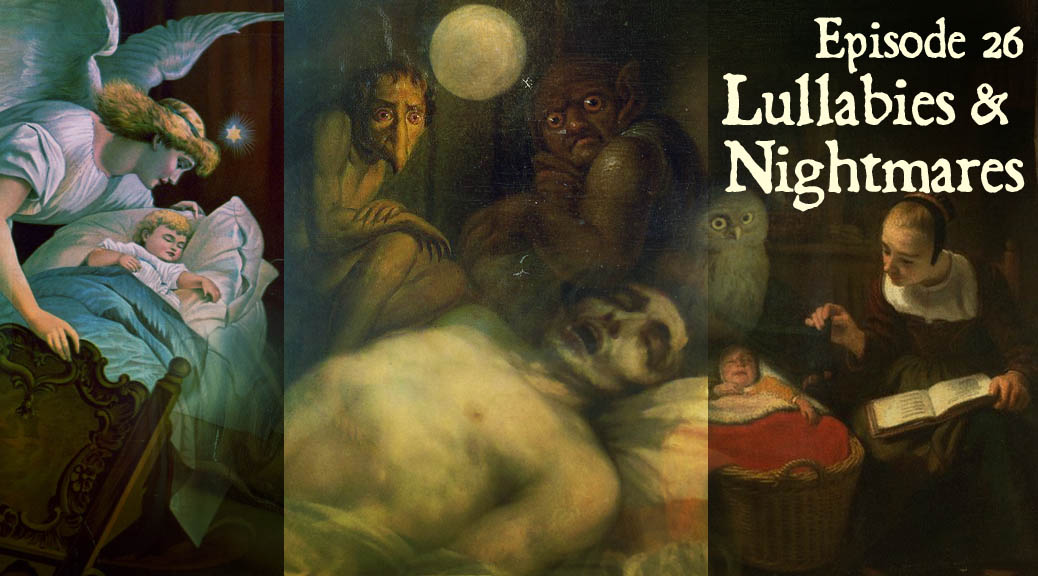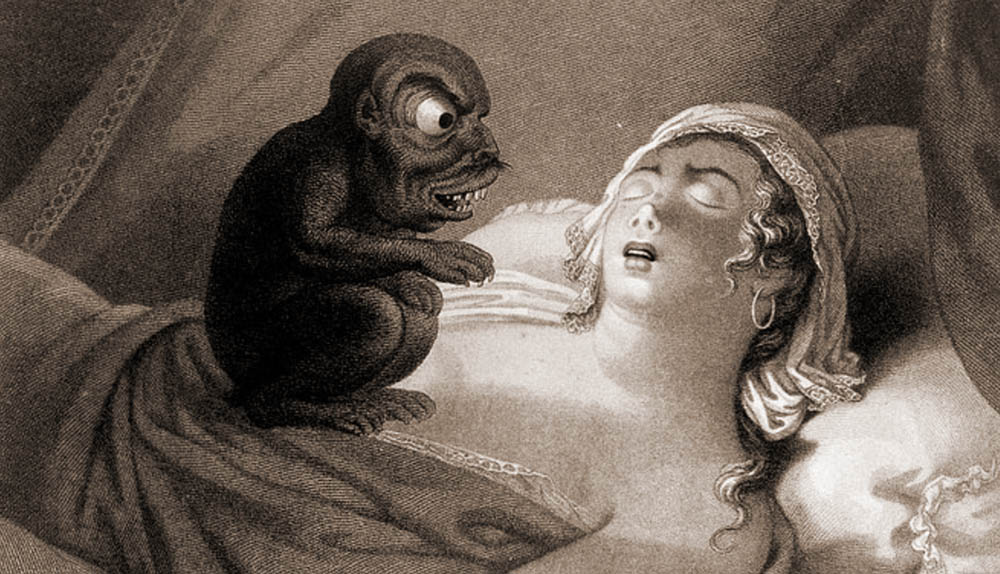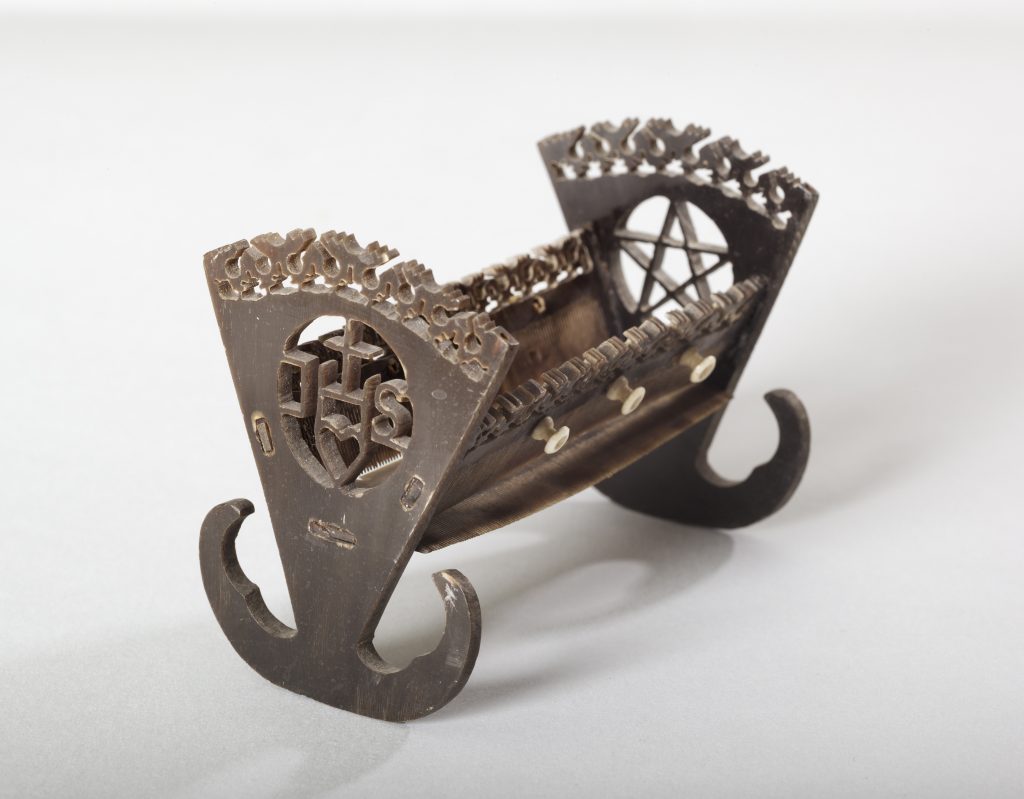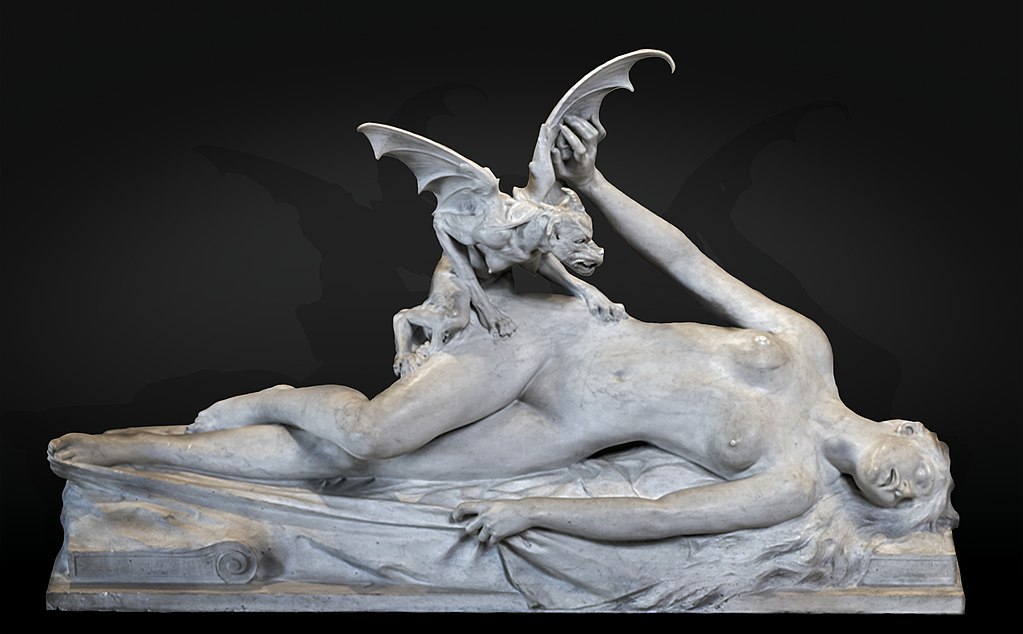
#26 Lullabies and Nightmares
Podcast: Play in new window | Download (Duration: 38:50 — 35.6MB)
Subscribe: Apple Podcasts | Spotify | Android | Podchaser | Email | RSS | More
This episode examines the terrors that come by night, not-so-soothing lullabies, prayers and charms against the nightmare.
We open with the grim Icelandic lulluby “Móðir mín í kví kví,” which tells the story of a newborn’s ghost haunting the mother who abandoned it. Another lovely, yet menacing Icelandic lullaby follows. “Bíum, bíum, Bambaló” alludes to an unnamed horror drawing nearer and nearer.
We learn that our word “nightmare,” originally designated a nighttime visit by a supernatural creature that pinned down and menaced the sleeper, ie, the “mare,” a word that arrived in English via the Saxons, and was derived from the Germanic “mara.” Recently, we’ve seen versions of this creature popping up in a number of horror films, snippets of which appear in a montage. These are: the 2018 film Mara and the 2011 Swedish film Marianne, both of which allude to the creature in their titles, and 2016’s Dead Awake and Before I Wake, as well as 2017’s Slumber and Don’t Sleep. And of course we include a nod to Nightmare on Elm Street, the film that started it all.

Stripped of its supernatural interpretation, the sleeper’s sensation of being pinned down and experiencing the sense of a malevolent presence is recognized by medical community as “sleep paralysis.” But researches of the last century are not the first to attempt to describe the phenomenon in physiological terms. We hear such a physiological take on the subject from 1584, drawn from The Discoverie of Witchcraft, a somewhat skeptical book on witchcraft.
The equation of the mare and the witch in English and Germanic culture is longstanding. The other term sometimes used by the scientific community to describe this phenomenon, “Night Hag Syndrome,” points to this, as the word “hag” is traceable to an ancient German term for witches, “Hagazussa,” which also happens to be the title of an excellent new folk-horror film from Germany. A snippet of the dark and droney soundtrack from that film is included.
Digging in a bit more on the topic of the mare, we learn that how the creature assumed a number of nocturnal forms while appearing in the day as either a witch or an unwitting human cursed by a witch, and hear a 13th-century account of an attack by a mare from the old Norse Norse Ynglinga Saga read by Wilkinson.
Next, we listen to a bit of another lullaby, this one from Russia, “Bayu Bayushki Bayu,” which tells of wolves ready to drag the sleeping child into the forest.
Whereas the “mara” (mare) is the preferred term for this creature in Great Britain (and English-speaking countries), Scandinavia, and northern Germany, further south in Germany, we hear of the “Alp,” a largely identical creature, with an etymological tie to our English word “elf.” The Alp exhibits a wider range of mischievous, elfin traits not common to the mare.

This same region is also haunted by the nocturnal “Drude” or “Trute,” which likewise presses and torments sleepers, but is more strongly connected to witches than elves. The word “Drude” is often combined with other words in German to describe witchy concepts, like the “Drudenfuss,” a word for “pentagram.” In the sometimes confusing world of folk-magic, the five-pointed star can be used as a form of white magic to combat darker magic and for this reason was often used on infants’ cradles to repel the Drude as in the illustration here. We also hear of a connection of the Drude to the recently released folk-horror anthology film A Field Guide to Evil.

There follows perhaps the most explicitly terrifying lullaby in tonight’s collection, the Russian song “Tili-tili-bom.”
A number of folk practices against the nightmare are described including methods of trapping the creature. Wilkinson reads us a story from Germany’s Black Forest in which the creature is trapped in a particularly peculiar way. Counting charms, such as those used against vampires are also discussed.
Our show ends with a discussion of traditional bedtime prayers, including “Now I Lay Me Down to Sleep,” which we learn can be traced to prayers used in 16th-century witchcraft, ancient Jewish “devil trap bowls,” Babylonian incantations, and a rite created by the 19th-century British occult gropu, The Hermetic Order of the Golden Dawn. Along the way, we also hear a traditional southern-German nighttime prayer (Abendsegen) as featured in the 1893 opera Hansel and Gretel.
